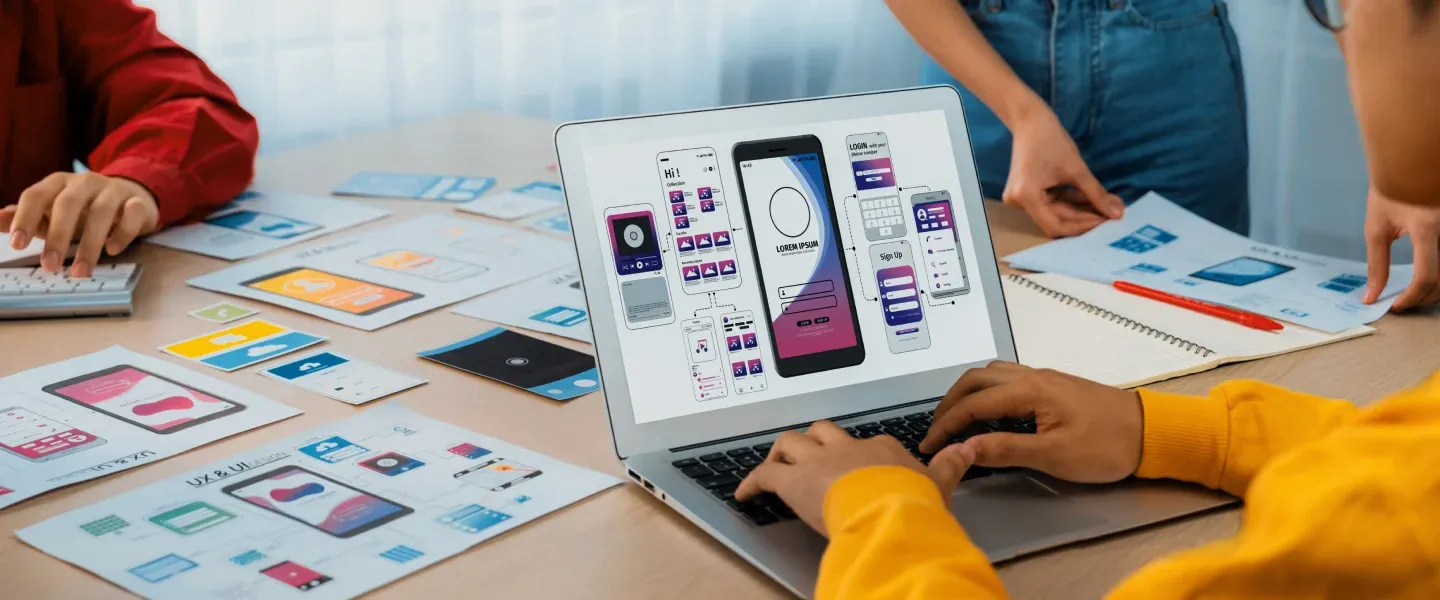Are you willing to develop a mobile app for your business? This article describes various phases in mobile application development process. Read it for more information.
The increased penetration of smartphones has led to more mobile users. Businesses are also trying to cater to this new set of users by creating mobile apps and improving customer experience. As a result, there is an increased requirement for developing mobile apps, rapidly addressing this audience, and catering to their needs. However, to ensure the application's success, businesses must adhere to a robust mobile app development process. We will discuss the steps involved in the process in detail.
Stages of Mobile App Development Process
Here is now the detailed overview of each phase involved in mobile application development.
Research and Strategy
The process of mobile app development starts by deciding the strategy for why you will need the app. Many apps are an extension of the desktop application. Next, you must identify the audience and understand their likes and dislikes. Research and strategy must take up a significant amount of time in the initial stages. The demographics and behavioral patterns of the audience must be considered too.
While doing your research, you must also check out your competition and assess how they are reaching out to their audience and the features they are offering. The information forms the background in deciding the goals and objectives that include a critical step in mobile app development.
Planning and Evaluating the Feasibility
Once you have finalized the app's goals, you can now analyze the features you will need in the project. It is where the analysis of competitor apps is critical. You can include the features that are absent in your competition and include them in yours. Once you have identified the elements you wish to include, you must prepare a product roadmap.
The features must be prioritized based on their importance and grouped into delivery milestones. It is also essential to identify the technologies that you will require. You must also check whether the backend system will support the functionalities you wish the app to have. You can take the help of experts from a leading mobile app development company.
UI/ UX Design
The app design must follow the optimized workflows that will allow the users to use the app seamlessly. In addition, it must ensure customer loyalty and increase dwell time on the app. So, first, map the customer journey and visualize how the visitors will go through the workflows in your app. Then, create the wireframes and a storyboard to explore the mobile app and demonstrate the navigational workflows.
The wireframes will cover the app layouts along with the device-specific designs. During this process, you must also include the specific branding guidelines of your company, also called the Style Guides. It will cover the font and style to be included in the app. The design of the navigation icons and how the app will adhere to your branding guidelines will also be covered.
Based on the guides created, the mockups will be made based on the wireframes. You can discuss with the client and finalize the aesthetic and the workflows. The static mockups can be turned into prototypes with high-quality tools. It can help stimulate the workflows that the final app will use. The user experience can also be assessed.
Development
Before the actual development of the mobile app starts, you must define the architecture and finalize the technology stack to be used. It is the most critical portion of the mobile application development process. Next, the backend technology covering the database and various other server-related objects is finalized. Next, the APIs to be created are assessed too. Finally, an intuitive user interface design is prepared for the front-end using the selected technology.
The developers will set up the project, and the pieces of code are checked before being merged into the project. Then, the app could be released to a small group of external testers for further testing of the code. If you are developing a complex app, you can use the agile methodology that helps in continuous improvements and progressive development.
Testing
The testing phase forms an integral part of your mobile app development initiative that ensures that the app is secure and stable. A team of expert testers must create appropriate use cases based on the industry and the various workflows included in the app. It will help the testers to record the results involving evaluation of the software quality. It will also help them to track the fixes in the code that must be done.
Your Quality Assurance team must be an integral part of this process. The application is now tested for compatibility, usability, performance, stress, and security, etc. The mobile app must undergo several tests to ensure a high-quality mobile solution. Some of the testing processes to be followed are:
- User Experience Testing
- Functional Testing
- Device and Platform Testing
- Security Testing
Deployment and Support
When the app is ready, you must choose the time to launch the app. After that, you can wish to publish the app on the Google Play Store or the App Store, or both. Of late, the Amazon App Store is also famous. The process involved in publishing on the different mobile app stores can vary across the various platforms.
Before publishing, you must have the metadata content ready. Keep in mind that the content must be optimized for the App Store you have chosen. You can also upload various promotional materials like videos and graphics. Some other necessary information like any geographic restrictions, configurations, and pricing may require uploading.
With Google Play Store, there would be a time lag before your mobile app is formally published. It is not the end, but only the beginning of future changes. You will receive feedback from the users that can be used as feedback for future improvements.
App Maintenance and Future Developments
Once the app has been published, the app's performance can be tracked by deploying adequate control points through KPIs. You can detect the crashes, downloads, etc. long with other metrics as set by you. However, your work on the app continues through the support activities and future developments needed. You must keep in mind that the enhancements must be uploaded onto the app store platforms in the same process as before.
Conclusion
Mobile app development is a continuous process that does not stop with the app being published on the app stores. You must take the help of a leading mobile app development company that can help you visualize the app and suggest the features and functionalities needed through adequate research.
We have been providing mobile app development services to some of the leading businesses cutting across different industries. You can reach out to us to start a discussion about how we may be of help.




